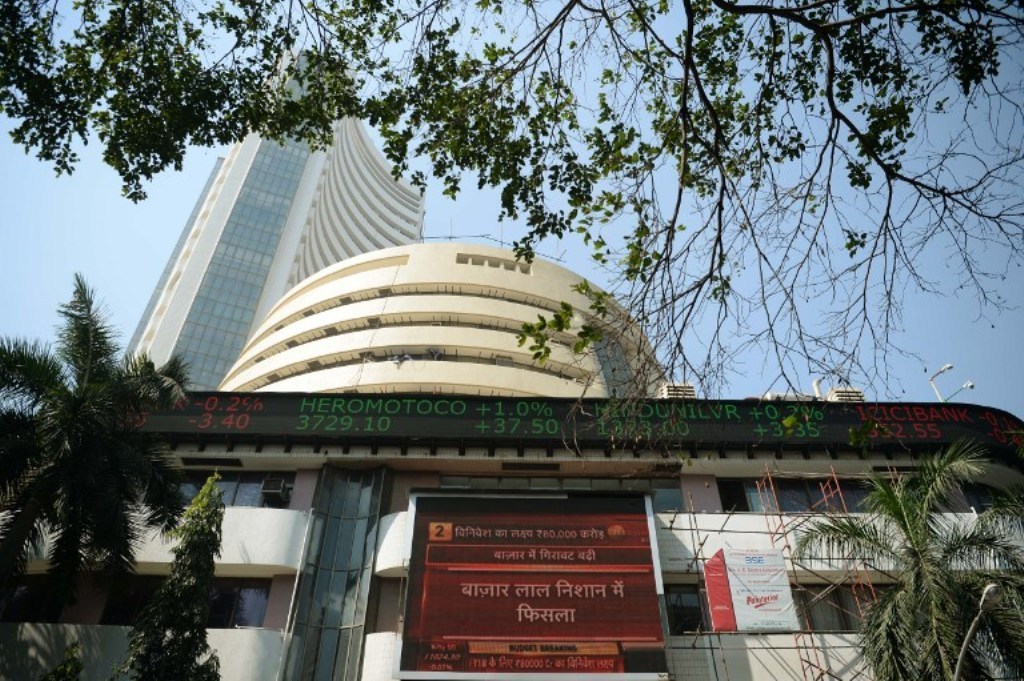(ATF) Global equity investors are showing renewed love for Indian stocks.
With equities soaring to record highs in recent weeks aided by a massive recovery from the post-Covid-19 lows of March, global brokerage firms have started upgrading Indian markets to overweight on hopes of improving corporate earnings and a sustainable economic recovery.
Morgan Stanley on Monday upgraded its target for Sensex – India’s benchmark index – to 50,000 by December 2021 from an earlier target of 37,300 for June 2021, on the view that Indian stocks have been outperforming other emerging markets for nearly six months and the coming growth cycle is not fully priced in.
The Asia Eight: Daily must-reads from world’s most dynamic region
Morgan Stanley’s re-rating follows similar optimism by Goldman Sachs, which last week raised Indian equities to overweight too and upgraded the NIFTY 50 – another benchmark index – target to 14,100 by the end of 2021.
Last week, Nomura had also increased its NIFTY target to 14,100, upgrading its rating on India to “overweight” from “market weight”.
“There are clear indications that the Indian economy has started taking off, riding on a post-Covid recovery, which I think is the main driving factor behind the current upgrades,” Hemang Jani, the head of equity strategy at Motilal Oswal, told Asia Times Financial.
“Besides the economic recovery comes after almost three years of stagnation, and there are enough indications that the expansion will sustain; and it is not just a short-term blip.”
High-frequency growth mode
Morgan Stanley said with the peaking of CovidVID-19 infections, high-frequency growth indicators are coming in strong, while both government policy actions and Indian companies’ earnings are beating expectations too.
India’s economy started its sharp recovery in September as Indian consumers turned more optimistic than they were during the pandemic, and revived demand that helped businesses and the economy pick up speed.
Morgan Stanley pointed at five high-frequency indicators that improved, the most significant of which was Manufacturing PMI (Purchasing Managers Index) that rose to 58.9 in October versus 56.8 in September.
“The PMI that measures the prevailing direction of economic trends in manufacturing is a crucial indicator, and given that the index touched its highest level since the middle of 2008, proves that the recovery is not temporary,” Jyoti Roy, equity strategist at Mumbai-based Angel Broking told ATF.
Morgan Stanley said there were clear signs that growth indicators were strong, such as: Power demand accelerated further to increase 12% year-on-year (YoY) in October versus 4.6% in September; indirect tax (GST) collections touched the highest level in eight months to 10.3% YoY; rail freight growth of 15% YoY in October versus 14% in September; and movement of products that rose 17.4% YoY versus 9.6% in September.
Experts including McKinsey attribute the recovery to pent-up demand after a strict lockdown in March, and predict that this will also result in Indian consumers increasing their spending across categories in the months to come.
“Net spending intent has improved across categories since March. The vast majority of Indian consumers have tried new shopping behaviours and digital habits during the crisis and report a high intent to continue. Though most Indians are still waiting for indicators beyond the lifting of restrictions to return to normal out-of-home activities, more are engaging in them,” a McKinsey survey said.
Robust rally
Part of the bullishness of the global brokerage firms stems from the robust rally that India’s markets have registered since the crash in March.
“The 30-share BSE Sensex rallied over 70% from the lows of March 23 [with the news of the coronavirus outbreak], while making new record highs this week (of about 44,000 on Tuesday), which is spectacular, and pushed the index close to the pre-Covid level of January and February,” Jani said.
The recent rallies have also boosted the confidence of foreign investors who have pumped close to $13.5 billion into Indian equities since April, he added.
“Besides, the increase in India’s weight in the MSCI Index that is coming up can result in an automatic foreign investor inflow of another $4.5 billion in Indian equity markets this month when the index weights change,” Jani predicted.
According to a Morgan Stanley notification in September, MSCI India’s weight in the MSCI Emerging Markets Index will increase to 8.7% and 8.8% (new additions) from the current level of 8.1% on November 27.
Heavy foreign money dependence
However, the fact that Indian markets are rising purely on inflows from foreign investors is also a concern.
While the current bull phase has been driven by foreign investments, local investors – particularly mutual funds – have been net sellers, Jani said. “If local investors do not return in the next few months, the markets could run out of steam.”
There are other risks like inflation, which is inching up, and the risk of a second wave of Covid infections.
“India’s infection rates are plummeting but a new wave of infections, particularly in North India, also looms as the cold weather sets in,” Roy of Angel Broking said.
A slowing job recovery and a decreasing labour force participation rate could drag the economic rebound going forward, experts noted.
Nevertheless, in a bull-case scenario where the virus situation improves, recovery in growth is sustained, and global stimulus supports asset prices, Morgan Stanley sees the Sensex rising to a level of 59,000.
But if the pandemic lingers into 2021, and growth falters while India fails to deliver an adequate policy response leading to losses in the financial system, the Sensex could slide to 37,000, Morgan Stanley said.
























